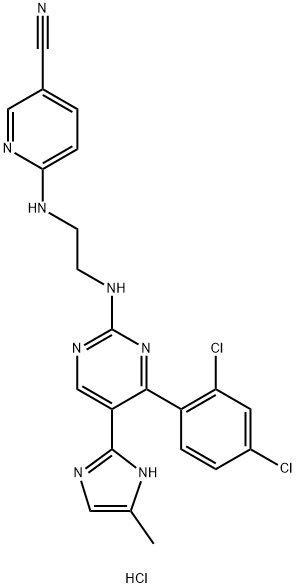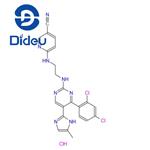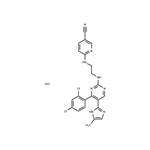CHIR-99021 is a potent and highly selective inhibitor of glycogen synthase kinase 3 (GSK-3). CHIR-99021 activates glycogen synthesis in CHO-IR cells and in isolated type 1 diabetic rat skeletal muscle. CHIR-99021 has also been shown to induce the reprogramming of murine and human somatic cells into stem cells. GSK-3α/β inhibitor
chir-99021 is a highly specific glycogen synthase kinase-3 (gsk-3) inhibitor which can inhibit both isoforms with ic50 of 10 nm (gsk-3α) and 6.7 nm (gsk-3β).chir-99021 was proved to promote self-renewal and maintain pluripotency of both b6 and balb/c es cells via stabilizing the downstream effectors like c-myc and β -catenin[1]. in j1 mesc cells, chir-99021 played an important role in maintaining the colony morphology as well as the self-renewal when combined with leukemia inhibitory factor (lif). chir-99021 has shown to regulate multiple signaling pathways which involve wnt/β-catenin, tgf-β, nodal and mapk, and the expression of epigenetic regulatory genes like dnmt3l[2].chir-99021 has been demonstrated to promote dn3 thymocytes proliferation and differentiation in the absence of pre-tcr signaling, notch1 signaling or cxcl12[3]. however, study has also found that higher concentration (10 μm but not 1 μm or 3 μm) of chir99021 might selectively inhibit differentiation by activating il-7 signaling pathway[3].
1. ye s1, tan l, yang r, fang b, qu s, schulze en, song h, ying q, li p. pleiotropy of glycogen synthase kinase-3 inhibition by chir99021 promotes self-renewal of embryonic stem cells from refractory mouse strains. plos one. 2012;7(4):e35892.2. wu y1, ai z, yao k, cao l, du j, shi x, guo z, zhang y. chir99021 promotes self-renewal of mouse embryonic stem cells by modulation of protein-encoding gene and long intergenic non-coding rna expression. exp cell res. 20133. plos one. 2013;8(3):e58501. doi: 10.1371/journal.pone.0058501. epub 2013 mar 20. schroeder jh1, bell ls, janas ml, turner m. pharmacological inhibition of glycogen synthase kinase 3 regulates t cell development in vitro. plos one. 2013;8(3):e58501.


